Backpack Size Guide: Your Key to the Perfect Fit in 2023
Understanding the Backpack Size Guide is essential for selecting a backpack that fits your needs. From daily carry to adventures, the right size ensures comfort and functionality. Discover why it matters.
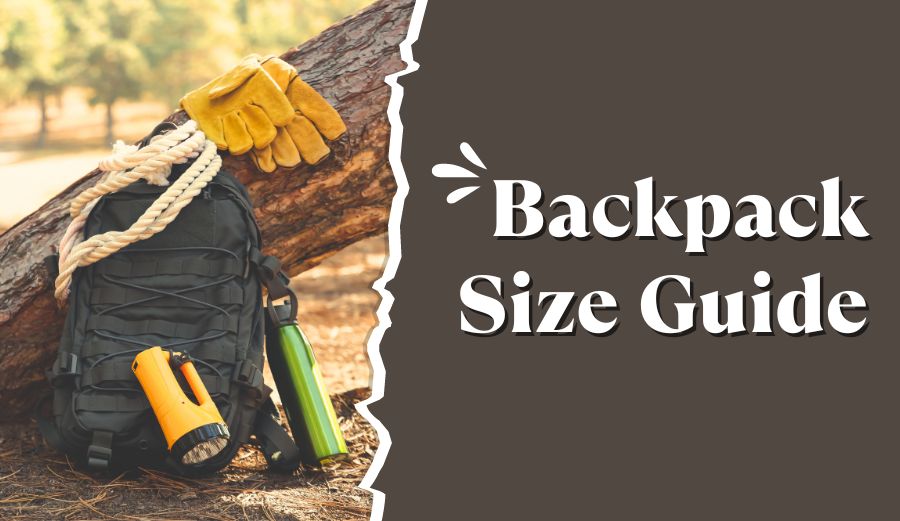
Picture yourself on a winding mountain trail, where every step feels effortless because your backpack fits like a second skin. That’s the magic of choosing the right backpack size. But in the digital age, online backpack shopping can be a maze of uncertainty, where the perfect fit seems elusive.
Fear not; our Backpack Size Guide is your trusted companion on this journey. We’re here to demystify the world of backpack sizes, offering insights and expertise so you can confidently select the ideal backpack for your adventures.
Say goodbye to ill-fitting packs and hello to a world of comfortable exploration. Welcome to your Backpack Size Guide.
Table of Contents
ToggleCracking the Code: Understanding Backpack Capacity
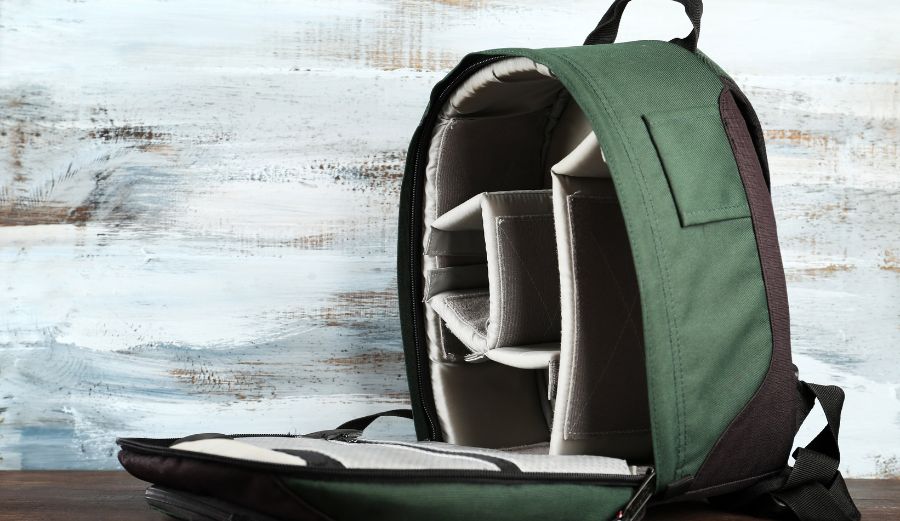
When choosing the perfect backpack, understanding its capacity is akin to discovering the map of your adventure. Picture this: You’re standing at the trailhead, ready to embark on a thrilling journey. Your backpack is more than just a bag; your trusty companion carries your world on its shoulders. The key to a seamless adventure? It’s all about comprehending backpack capacity, which begins with grasping the concept of liters.
The Metric That Matters: Explaining Liters as a Measure of Backpack Volume
Liters, in the realm of backpacks, are the units that determine the volume, just like inches or centimeters measure length. This metric defines how much space your pack can offer to accommodate your gear, clothing, and essentials. It’s the litmus test for finding the right fit – an essential aspect whether you’re a seasoned hiker, a student, or a daily commuter.
Behind the Scenes: The Process of Calculating Backpack Volume
Have you ever wondered how backpack manufacturers arrive at those seemingly precise liter figures? It’s a fascinating process rooted in accuracy and consistency. To decode this, we’ll dive into the mechanics of calculating backpack volume. From small plastic balls (think Ping Pong balls) to meticulous measurements, it’s a journey that unveils the science behind these numbers.
Measure Twice, Choose Once: Highlighting Discrepancies in Claimed vs. Measured Volumes
Here’s where it gets intriguing. What manufacturers claim is sometimes different from what you get. We’ll highlight the potential discrepancies between what’s advertised and what’s delivered. This knowledge will give you the tools to spot these differences and make informed decisions when shopping for your next backpack.
The Capacity Truth: Emphasizing the Need to Understand True Backpack Volume
Knowing the capacity is paramount in a world where every liter in your backpack counts. It directly impacts your comfort and convenience during your journeys, whether traversing trails, navigating campus, or commuting to work. By the time you’ve unlocked the mysteries of backpack capacity, you’ll be well-prepared to embark on your next adventure, confident in your selection.
Navigating Backpack Size Categories: Small, Medium, and Large
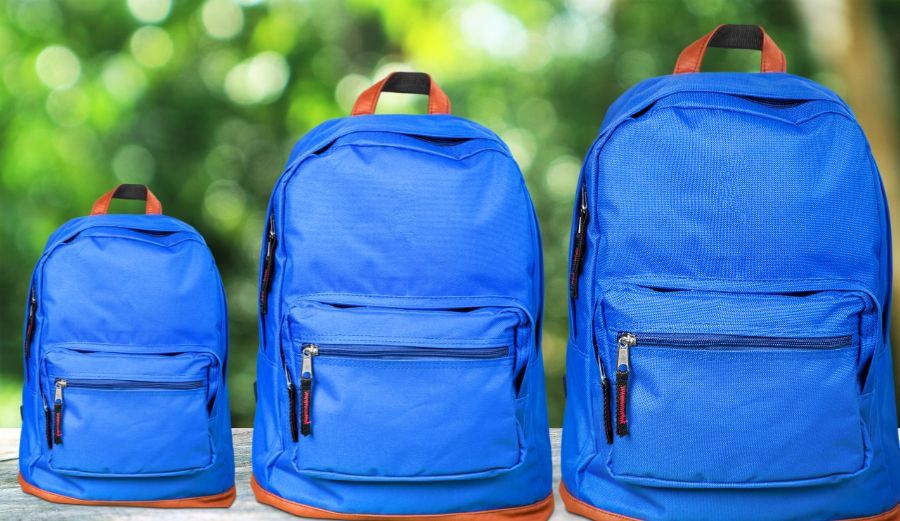
When it comes to selecting the perfect backpack, size matters. It’s the difference between comfortably carrying your essentials and feeling burdened by an ill-fitting bag. To help you make an informed choice, we’ll delve into backpack size categories—Small, Medium, and Large. Join us as we explore these categories and shed light on the nuances that make each unique.
Understanding Backpack Size Categories
Before we dive into the specifics, let’s define the three primary backpack size categories:
Small Backpacks (Under 19 Liters)
- Small backpacks are designed for minimalistic carry.
- They excel in holding daily essentials, tech gadgets, and personal items.
- While they are compact, they may not accommodate larger laptops.
Medium Backpacks (20-29 Liters)
- Medium-sized backpacks strike a balance between compactness and capacity.
- They’re suitable for school, work, and daily commuting.
- Most medium packs offer spacious compartments and can fit larger laptops comfortably.
Large Backpacks (30-39 Liters)
- Large bags are geared toward those with substantial storage needs.
- Ideal for students, travelers, and those carrying bulky items.
- Note that they may be less comfortable for smaller individuals due to their size.
Variations in Categorization
While the Small, Medium, and Large categories provide a helpful framework for understanding backpack sizes, it’s essential to acknowledge the variations and lack of universal standards within these categories.
Manufacturers classify their backpacks based on capacity, but the numbers may sometimes align across brands. A 25-liter pack from one manufacturer might fall into the Small category for another. This lack of consistency can be confusing for shoppers.
Additionally, some manufacturers introduce subcategories, such as “Extra Small,” “Medium-Large,” or even numerical ranges within these three main categories. These subcategories aim to offer more precise sizing options but can further complicate the selection process.
Understanding these variations is critical to making an informed decision when shopping for a backpack. Remember that what one brand labels as “Medium” might align more closely with your expectations of a “Small” or “Large” pack.
The following sections will delve deeper into each size category, exploring their typical use cases and providing recommendations for popular backpacks within each range.
By the end of this guide, you’ll have the knowledge to confidently choose the right-sized pack for your needs.
Stay tuned as we begin with a closer look at Small Backpacks (Under 19 Liters), perfect for those seeking compact and minimalist carrying solutions.
Small Backpacks (Under 19 Liters): Compact Carriers for Daily Essentials
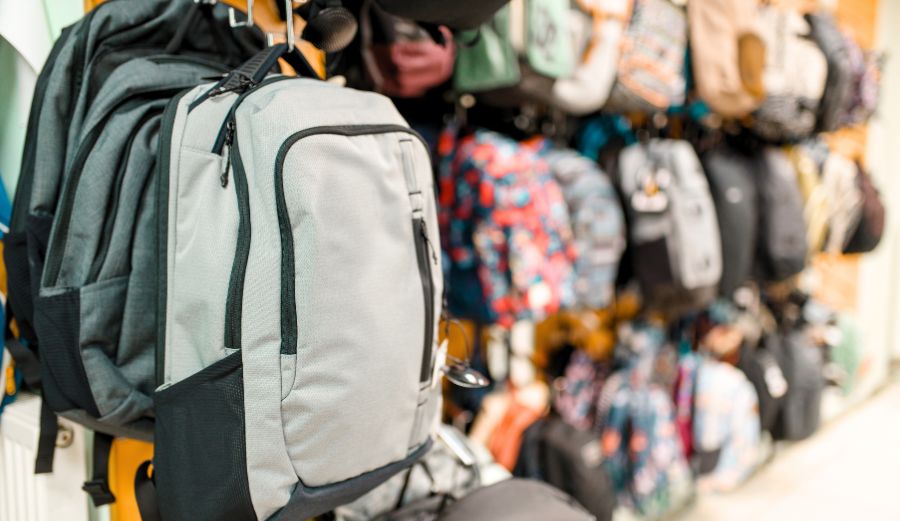
Regarding backpacks, size is sometimes about how much you can carry but how well you can take it. Small bags, typically under 19 liters in capacity, have carved a niche for themselves in portable convenience. This segment will delve into small backpacks, understanding their purpose, use cases, and unique considerations.
Defining the Purpose of Small Backpacks
Small backpacks are all about simplicity and streamlined carrying. Their purpose revolves around providing convenient and efficient transport to your essentials. Here’s what they excel at:
- Daily Essentials: Small backpacks are the go-to choice for those looking to carry everyday essentials effortlessly. They’re perfect for items like keys, water bottles, sunglasses, and other necessities.
- Tech Carry: If you’re a tech enthusiast, small backpacks offer an excellent solution for carrying your gadgets. They can comfortably accommodate items like laptops, tablets, and their accessories.
Limitations in Terms of Laptop Carrying
While small backpacks are versatile, they do come with limitations, especially when it comes to carrying laptops:
- Size Constraints: Small backpacks typically need help to accommodate larger laptops. If you rely on a 15-inch or larger laptop, you might need help to fit it comfortably in most small backpacks.
- Lack of Padding: Many smaller backpacks may offer limited or no dedicated laptop sleeves. You must take extra precautions to protect your laptop when carrying it in a small bag.
Recommended Small Backpacks
To help you make an informed choice, here’s a list of small backpacks that have earned their stripes in compact carriers. Each recommendation comes with a brief review to give you a sense of what to expect:
- King Kong EDT Backpack [Review]: A rugged and versatile choice for those seeking durability and functionality in a small package.
- Doughnut Macaroon [Review]: A stylish and minimalist option, perfect for fashion-forward individuals who want a touch of elegance in their daily carry.
- Day Owl Backpack: Eco-conscious consumers will appreciate the sustainable materials and sleek design of the Day Owl Backpack.
- Got Bag Daypack: Ideal for those who want their carry to make a positive impact; Got Bag’s Daypack is made from recycled ocean plastics.
- Everyman Hideout 5-Way Commuter: A versatile backpack designed for modern commuters, offering multiple carry options to suit your needs.
- Harber London Commuter: Designed using top-quality leather, this backpack seamlessly blends style and functionality, catering to the needs of busy professionals on the move.
- Chrome Barrage Cargo: If you need durability in challenging conditions, it has your back with its rugged build.
- Topo Designs Rover Pack: Merging urban chic with rugged outdoor resilience, this backpack is ideal for individuals seeking adventure in their everyday activities.
- HEX Technical Backpack (with wireless charging): Embrace the future of tech carry with this backpack that not only has your devices but can also charge them wirelessly.
- Targus 15″ Newport Backpack: For those laptop enthusiasts aiming to make a striking statement with their laptop bag, this option offers both elegance and practicality.
Considerations for Laptop Sleeves in Smaller Sizes
If you plan to carry a laptop in your small backpack, consider the following:
- Look for bags with padded laptop compartments or sleeves, even in the small category.
- Measure your laptop dimensions to ensure it fits comfortably within the backpack’s laptop compartment.
- Invest in additional laptop protection, such as sleeves or hard cases, to safeguard your device.
In our next segment, we’ll explore the world of Medium Backpacks (20-29 Liters), providing a balanced blend of capacity and convenience, making them suitable for various scenarios.
Medium Backpacks (20-29 Liters): Balancing Capacity and Convenience
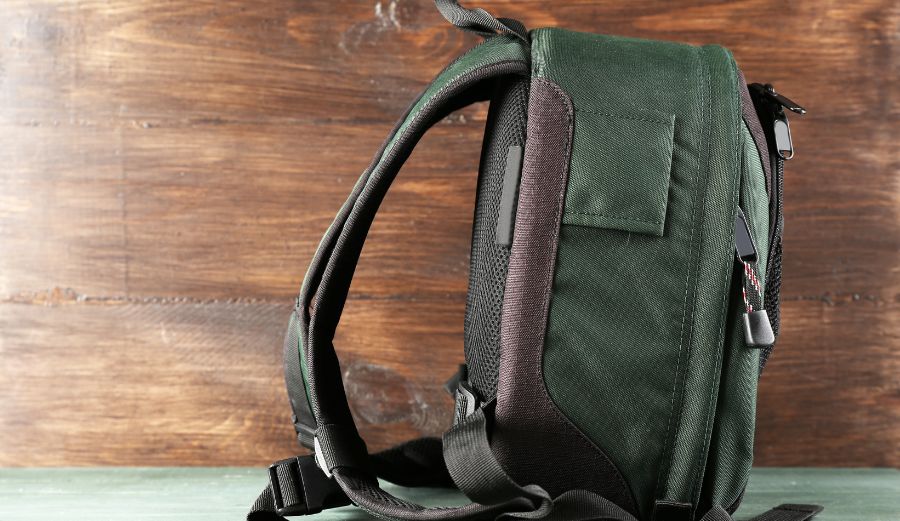
Medium-sized backpacks, with capacities ranging from 20 to 29 liters, occupy the sweet spot in the world of carry solutions. In this section, we’ll explore the versatility of these backpacks, detailing their ideal use cases, emphasizing their spacious laptop sleeves, and presenting a carefully curated selection of recommended medium-sized bags.
Exploring the Versatility of Medium-Sized Backpacks
Medium backpacks are prized for their ability to strike a harmonious balance between capacity and convenience. They are designed to cater to a wide array of needs, making them one of the most versatile options available. Here’s why they stand out:
- Balanced Capacity: Medium backpacks provide enough room to carry various items without becoming too cumbersome.
- Multi-Use: Their versatility makes them suitable for various activities, from school and work to outdoor adventures and commuting.
- Spacious Compartments: Many medium backpacks feature ample main compartments that comfortably accommodate more oversized items.
Typical Use Cases
Medium-sized backpacks are designed to excel in various scenarios, making them popular among users with diverse needs. Here are some typical use cases where medium packs shine:
- School: Medium backpacks are perfect for students. They can easily hold multiple books, notebooks, and school essentials.
- Work: For professionals, medium backpacks provide ample space for laptops, documents, and other work-related items, all while maintaining a sleek and professional appearance.
- Commuting: Medium backpacks offer the right balance of capacity and portability for daily commuting. They can accommodate everything you need for a day at the office or on the move.
- Outdoor Adventures: Many medium-sized backpacks are designed for outdoor enthusiasts. They can carry hiking gear and camping equipment or even serve as daypacks for outdoor adventures.
Emphasis on Larger Laptop Sleeves
One standout feature of medium backpacks is their generous laptop sleeves. If you rely on a larger laptop for work or school, these backpacks have you covered. You’ll find:
- Dedicated Sleeves: Most medium-sized backpacks come with dedicated laptop sleeves that can comfortably fit laptops with up to 15 inches or larger screen sizes.
- Padded Protection: These sleeves often feature ample padding to safeguard your valuable tech gear from bumps and impacts during your daily commute or travels.
Recommended Medium-Sized Backpacks
To help you make an informed choice, we’ve selected a range of medium-sized backpacks known for their quality, functionality, and user-friendly features. Here’s a closer look at these backpacks:
- Day Owl Backpack: An eco-conscious choice crafted from sustainable materials for work and play.
- Patagonia Atom Tote Pack 20L [Review]: A versatile option that can be worn as a backpack or tote, ideal for the eco-conscious urban explorer.
- Under Armour Hustle Sport [Review]: A sporty backpack focused on durability and functionality, perfect for athletes on the move.
- Able Carry Daily Plus [Review]: Designed for commuters, this backpack offers a blend of style, comfort, and organization.
- The Ridge Commuter Weatherproof [Review]: Built to withstand the elements, this backpack is a reliable choice for braving any weather conditions.
- King Kong Heritage Leather [Review]: A leather backpack that combines sophistication with practicality, making it perfect for professionals.
These recommendations offer diverse options to suit various tastes and preferences. Each backpack has a comprehensive review to provide insights into its design, functionality, and suitability for different purposes.
Medium-sized backpacks are all about versatility, making them a dependable companion for students, professionals, commuters, and adventurers alike.
In the next section, we’ll explore the realm of Large Backpacks (30-39 Liters) designed to meet the needs of those seeking substantial storage capacity in their carry solutions.
Large Backpacks (30-39 Liters): Beyond Ordinary Carrying Capacity
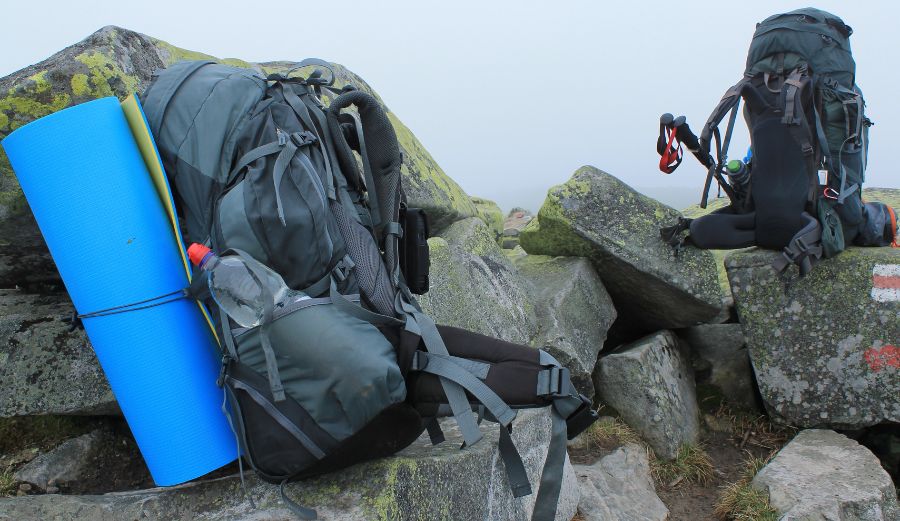
Large backpacks, boasting capacities ranging from 30 to 39 liters, step into the limelight when you need more than just the basics. In this section, we’ll explore the advantages of these capacious companions, highlighting their suitability for students and travelers. We’ll also address potential discomfort for smaller individuals and present a comprehensive list of preferred large backpacks with in-depth reviews.
Advantages of Large Backpacks
Large backpacks offer several compelling advantages that make them indispensable in specific scenarios:
- Ample Storage: The primary allure of large backpacks is their abundant storage space. They can comfortably hold multiple textbooks, clothing for travel, or bulky items for outdoor adventures.
- Organization: Many large backpacks come equipped with multiple compartments, pockets, and organizers, ensuring that everything you need is readily accessible.
- Versatility: Large backpacks are versatile enough to adapt to different situations. Whether you’re heading to class, embarking on a trip, or venturing into the great outdoors, they can accommodate your needs.
Suitability for Students and Travelers
Large backpacks cater to the unique requirements of students and travelers:
- For Students: A large backpack is your best friend if you’re a student with a heavy class load. It can comfortably accommodate textbooks, notebooks, stationery, and even a laptop, ensuring you’re well-prepared for a day on campus.
- For Travelers: Travelers benefit from the spaciousness of large backpacks, which can hold several days’ worth of clothing, toiletries, and travel essentials. They often come with features like compression straps and multiple compartments, making packing and organization a breeze.
Comfort Considerations for Smaller Individuals
While large backpacks offer many advantages, they may pose comfort challenges for smaller individuals:
- Size Disproportion: The larger dimensions of these backpacks can feel overwhelming on smaller frames, leading to discomfort during prolonged wear.
- Strap and Back Panel Fit: Ill-fitting shoulder straps and back panels can exacerbate discomfort, as they may not conform to smaller body types.
Options Designed for Women
Fortunately, there are backpacks specifically designed to address these comfort concerns. Packs engineered with women’s fit in mind often feature:
- Narrower Shoulder Straps: Straps fit women’s shoulders comfortably, preventing discomfort or chafing.
- Shorter Torso Lengths: Backpacks designed for women tend to have shorter torso lengths, ensuring a more secure and comfortable fit.
Preferred Large Backpacks
To help you navigate the expansive world of large backpacks, we’ve compiled a selection of preferred options, each offering unique features and benefits. Here’s a closer look at these backpacks:
- North Face Recon Backpack [Review]: A reliable choice for students and travelers, known for its durability and organization.
- Pacsafe Venturesafe EXP35 [Review]: Perfect for security-conscious travelers, this backpack boasts anti-theft features and ample storage.
- King Kong EDGE35 [Review]: A rugged option designed for outdoor enthusiasts who need durability and versatility.
- Targus Work+ Expandable Daypack 32L: Ideal for professionals, this backpack combines style with functionality and expandability.
- North Face Surge Backpack: A well-rounded backpack focused on comfort and organization, suitable for various needs.
- Lo & Sons The Hakuba: Stylish and functional, this backpack combines urban fashion with practicality for a seamless travel experience.
Large backpacks are the go-to choice when you need more than the essentials. Whether you’re a student, a traveler, or someone with diverse carrying needs, these backpacks offer the space and organization required to keep you prepared and organized.
In the next section, we’ll delve into backpacks that exceed 40 liters, specifically designed for travel, hiking, and backpacking.
Backpacks Over 40 Liters: Reserved for Adventure and Exploration
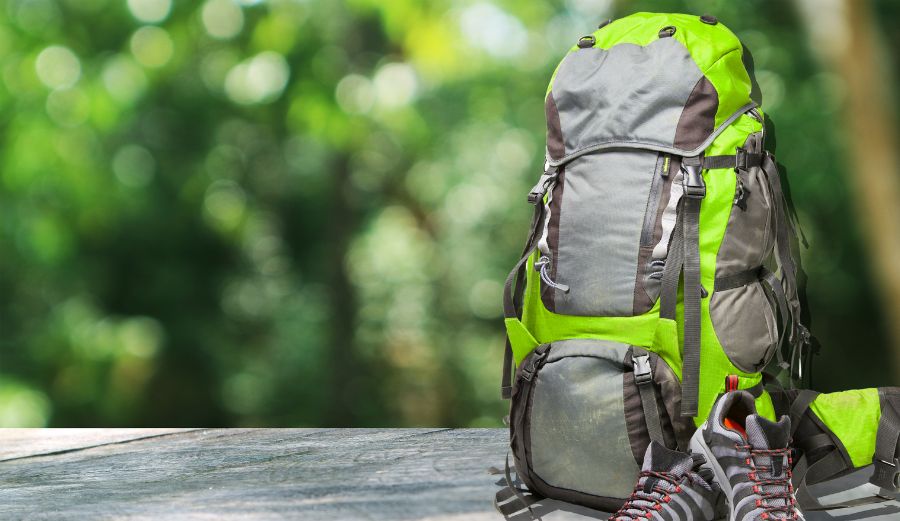
This section addresses our guide’s conspicuous absence of bags over 40 liters, emphasizing their specialized role in travel, hiking, and backpacking endeavors. We also caution against using these larger packs for daily purposes like school or commuting, as their design and capacity are tailored to different requirements.
Explaining the Exclusion
Our guide focuses on backpacks with capacities ranging from small to large, covering the needs of most individuals in everyday situations. However, bags over 40 liters are in a league of their own, primarily designed for specific activities such as travel, hiking, and backpacking. Given their distinct purpose and features, we have excluded them from this guide to maintain clarity and relevance for our target audience.
Suitability for Travel, Hiking, and Backpacking
Backpacks exceeding 40 liters are exceptional choices for adventure seekers and outdoor enthusiasts. Here’s why they shine in these domains:
- Travel: These backpacks are often designed to meet the needs of travelers seeking extended trips. They can comfortably accommodate clothing, gear, and essentials for multi-day or multi-week adventures.
- Hiking: For hikers, especially those embarking on long-distance treks or carrying camping gear, larger backpacks provide the space necessary to have all the essentials while maintaining comfort.
- Backpacking: Backpackers venturing into the wilderness for an extended period rely on these packs to carry everything they need to survive, from shelter and food to clothing and equipment.
Advising Against Daily Use
While backpacks over 40 liters are excellent for travel, hiking, and backpacking, they could be better suited for daily purposes like school or commuting. Here’s why:
- Excessive Size: These backpacks are significantly larger, making them unwieldy and uncomfortable for daily use. Maneuvering through crowded spaces or fitting them under a desk can be challenging.
- Overpacking Risk: With their generous capacity, there’s a temptation to overpack for daily activities, leading to unnecessary weight and discomfort.
- Limited Organization: Backpacks designed for adventure prioritize space over organization. They often need more specialized compartments and features required for daily organization.
- Bulkiness: These packs can look out of place in professional or formal settings, making them less suitable for work or school.
Choosing the Right Tool for the Job
Just as a carpenter selects different tools for different tasks, choosing the right backpack for your needs is essential. Opt for a bag within the Small, Medium, or Large categories discussed earlier in this guide for daily activities. Reserve backpacks over 40 liters for your adventures and exploration, where their capacity and design genuinely shine.
Our concluding section summarizes key takeaways from this guide, providing a comprehensive overview of backpack size considerations to empower you to make informed choices when selecting your next backpack.
More Giant Capacity = Larger Backpack: Understanding the Correlation
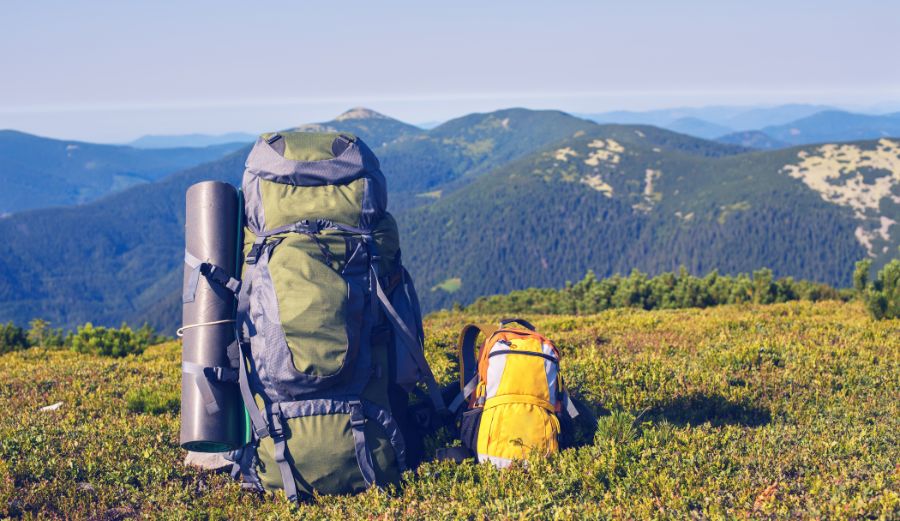
Regarding backpacks, the rule is simple: the larger the Capacity, the larger the bag. In this section, we’ll explore the relationship between backpack capacity and physical size, exploring how size impacts comfort and fit. We’ll also address the importance of more prominent individuals opting for appropriately sized backpacks to ensure a comfortable and ergonomic carrying experience.
Elaborating on the Correlation Between Capacity and Size
The connection between backpack capacity and physical size is straightforward:
- Capacity: Refers to the volume or storage space a backpack offers, usually measured in liters (L).
- Extent: Relates to the physical dimensions of the bag, including its height, width, and depth.
As backpack capacity increases, so does its physical size. This correlation is essential for understanding the practicality and comfort of a backpack.
How Size Impacts Comfort and Fit
Size plays a crucial role in the comfort and fit of a backpack, influencing various aspects of the carrying experience:
- Load Distribution: Larger backpacks distribute the weight of the contents more evenly across your back, reducing strain and discomfort during extended wear.
- Ergonomics: The physical dimensions of a backpack affect how it conforms to your body. Properly sized bags are designed to fit comfortably and securely, minimizing movement and preventing chafing.
- Balance: The size of the backpack impacts your balance, particularly when carrying heavy loads. A giant pack with the right design can help maintain stability and prevent fatigue.
- Accessibility: Smaller backpacks provide quick and easy access to your belongings, while larger packs may require more effort to retrieve items from deeper compartments.
The Need for Larger Individuals to Wear Larger Backpacks
Choosing a giant backpack cannot be overstated for more prominent individuals. Here’s why it matters:
- Proportionate Fit: Larger individuals often have broader shoulders, longer torsos, and larger frames. Choosing a more giant backpack ensures a proportionate fit that accommodates these physical characteristics.
- Comfort and Support: An appropriately sized backpack for more prominent individuals offers improved comfort and support, reducing the risk of discomfort, back pain, and strain.
- Stability: Larger individuals may carry larger and heavier loads. A giant backpack provides the strength needed to handle these loads effectively.
- Enhanced Mobility: The right-sized backpack ensures optimal mobility and balance, allowing more prominent individuals to move comfortably and confidently.
When shopping for a backpack, mainly if you are on the larger side, it’s essential to consider your body’s dimensions and select a bag that complements your physique.
The following section will explore how other factors, such as materials, shape, and design, influence what can fit inside a backpack. We’ll also provide a practical example to highlight why two bags with the same Capacity may offer different storage capabilities.
Backpack Capacity and Design: More Than Meets the Eye
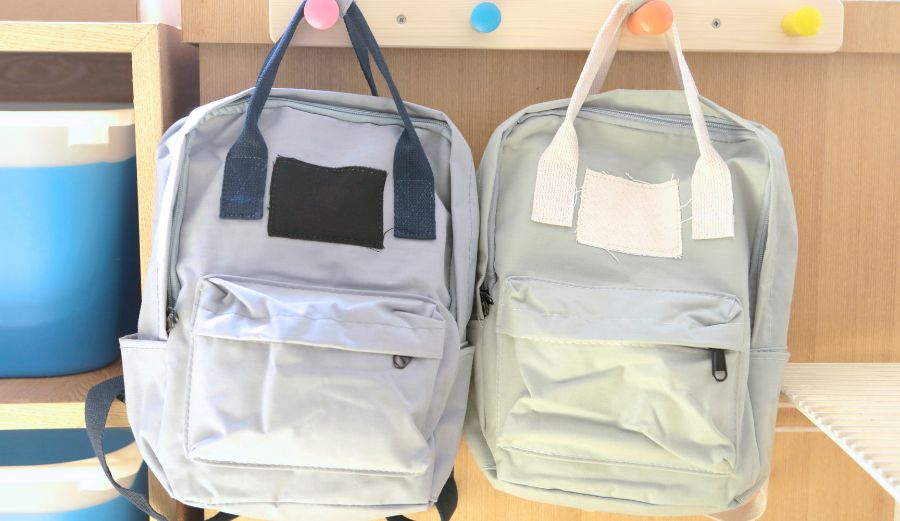
In this section, we delve into the intriguing world of backpacks, where capacity alone is not the sole determinant of what a bag can hold. We explore how a backpack’s materials, shape, and design influence its functionality. We use practical examples and case studies to illustrate this essential concept.
Capacity Alone Does Not Tell the Whole Story
When evaluating a backpack’s potential, focusing solely on its capacity, measured in liters (L), is tempting. However, this metric only scratches the surface of what a backpack can genuinely hold. Power provides a baseline, but the backpack’s design and features unlock its full potential.
The Influence of Materials
The materials used in a backpack’s construction play a pivotal role in its functionality:
- Flexible Materials: Backpacks crafted from flexible materials, such as waxed canvas or soft nylon, can adapt to the shape and volume of their contents. This flexibility allows you to squeeze in extra items when needed.
- Rigid Materials: Backpacks made from rigid or structured materials, like hardshell backpacks, maintain their shape, making them more suitable for delicate items or specialized gear.
Shape and Design Matters
The shape and overall design of a backpack can drastically impact its utility:
- Clamshell Design: Backpacks with a clamshell opening provide easy access to the main compartment, enabling efficient packing and unpacking. They are ideal for travelers and students who need quick access to their belongings.
- Top-Loading Design: Backpacks from the top are favored for outdoor adventures and backpacking. They offer security and stability for heavy loads.
- Compartments and Pockets: Backpacks with well-organized compartments and pockets keep items neatly arranged, making them suitable for work, school, and daily use.
Practical Examples and Case Studies
Let’s illustrate the concept of capacity and design with two practical examples:
Example 1: The 16-Liter Day Owl Backpack vs. the 19-Liter Venque Amsterdam 2.0
- Day Owl Backpack: Despite its 16-liter capacity, its flexible waxed canvas material and clamshell design allow it to accommodate nearly as much as the 19-liter Venque Amsterdam 2.0. The design and materials significantly affect what each backpack can hold.
Example 2: The North Face Recon Backpack vs. a Generic Backpack with the Same Capacity
- North Face Recon Backpack: This backpack boasts a capacity of around 30 liters, but its thoughtful design, padded laptop sleeve, and organization pockets make it more functional and practical than a generic backpack with the same capacity. It’s an excellent example of how design enhances utility.
These examples highlight that capacity is just one piece of the puzzle. The backpack’s materials, shape, and design can dramatically impact what it can hold and how effectively it can carry your belongings.
Additional Considerations: Beyond Size, Features That Matter
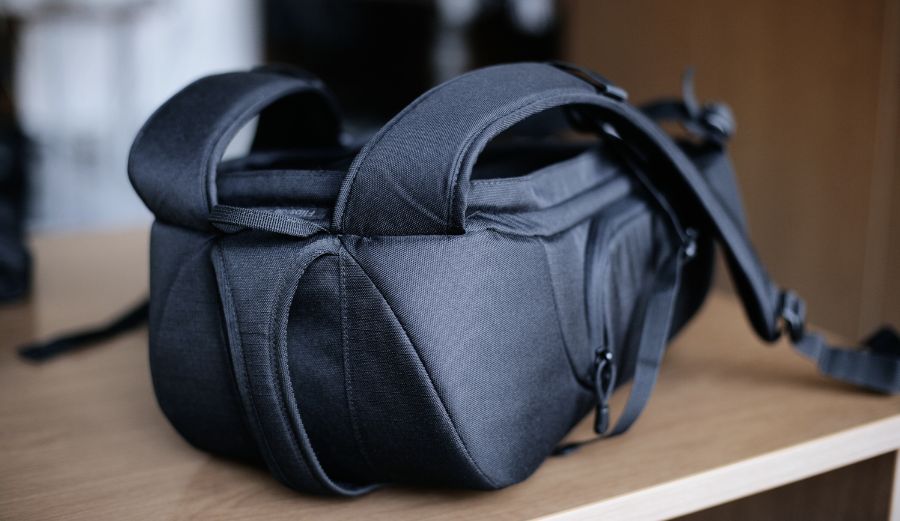
This final section will explore specific features and factors when choosing a backpack size. Beyond capacity and design, these elements are crucial in determining the right backpack for your needs. We’ll explore weight distribution, ergonomics, pockets, compartments, and specialized use cases like camera backpacks and hiking packs.
Weight Distribution
Effective weight distribution is vital for comfort and stability, especially when carrying heavy loads. Consider the following:
- Padded Straps and Hip Belts: Look for backpacks with padded shoulder straps and hip belts to evenly distribute the weight and reduce strain on your shoulders and back.
- Compression Straps: Backpacks equipped with compression straps help secure the load and maintain balance, which is particularly important for hiking and outdoor activities.
Ergonomics
A comfortable and ergonomic design is essential for long-term wear:
- Adjustable Features: Backpacks with adjustable straps, back panels, and hip belts allow you to customize the fit to your body, ensuring maximum comfort.
- Ventilation: Backpacks with ventilated back panels promote airflow, reducing sweat and discomfort during hot weather or strenuous activities.
Pockets and Compartments
The organization is vital for keeping your belongings accessible and well-arranged:
- Dedicated Laptop Compartment: If you need to carry a laptop, consider backpacks with a dedicated laptop compartment for secure and easy access.
- Multiple Pockets: Look for backpacks with various pockets and compartments to keep your items organized and prevent them from shifting during travel or activities.
Specialized Use Cases
Certain activities demand specialized backpacks designed for specific purposes:
- Camera Backpacks: If you’re a photographer, camera backpacks come with padded dividers and compartments to protect your camera gear while offering easy access.
- Hiking Packs: Hiking backpacks are designed with hiking in mind, featuring hydration reservoir sleeves, trekking pole attachments, and rugged materials built to withstand outdoor conditions.
- Travel Backpacks: For frequent travelers, travel-specific backpacks often include features like lockable zippers, concealed pockets, and removable daypacks for added versatility.
Wrap Up: Your Backpack Size Guide – Choose Wisely for Your Adventure
Selecting the ideal backpack involves considering various factors beyond size. Weight distribution, ergonomics, pockets, compartments, and specialized features all contribute to your backpack’s overall functionality and comfort.
As you embark on your quest for the perfect backpack, remember that it’s not just about finding the right size—it’s about finding the ideal combination of size, design, and features that align with your unique needs and preferences.
With this comprehensive guide, you now possess the knowledge and insights to make an informed decision and choose a backpack that will be your dependable companion for work, school, travel, outdoor adventures, or any other pursuit that calls for a reliable carry solution. Happy backpack shopping!
